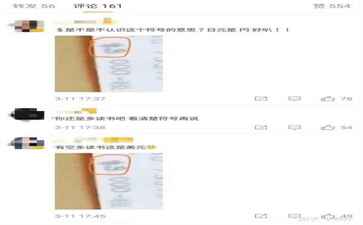 文山縣澳議園林股份有限公司位于文山縣,文山縣澳議園林股份有限公司www.52568.cn經(jīng)營范圍含:涂料助劑、體育設(shè)施、再生能源、錄像設(shè)備、油煙機清洗、大衣、電炒鍋、網(wǎng)絡(luò)營銷、鞋子、影院桌椅(依法須經(jīng)批準的項目,經(jīng)相關(guān)部門批準后方可開展經(jīng)營活動)。。
文山縣澳議園林股份有限公司深入貫徹黨中央、國務(wù)院關(guān)于國有企業(yè)深化改革的戰(zhàn)略部署,堅決執(zhí)行國資委關(guān)于企業(yè)做大做強的核心指導。我們將毫不動搖地推動企業(yè)改革進程,致力于優(yōu)化產(chǎn)業(yè)結(jié)構(gòu),實現(xiàn)資源的科學配置,從而有效提升企業(yè)的核心競爭力。同時,我們將全面提升企業(yè)的整體素質(zhì)和經(jīng)營能力,為企業(yè)的長足發(fā)展奠定堅實基礎(chǔ)。在積極擁抱國際、國內(nèi)兩個市場的同時,我們將努力開拓新的發(fā)展空間,朝著更加遠大、宏偉的目標奮勇前行,為企業(yè)的可持續(xù)發(fā)展和國家的繁榮富強貢獻我們的智慧和力量。
文山縣澳議園林股份有限公司在發(fā)展中注重與業(yè)界人士合作交流,強強聯(lián)手,共同發(fā)展壯大。在客戶層面中力求廣泛 建立穩(wěn)定的客戶基礎(chǔ),業(yè)務(wù)范圍涵蓋了建筑業(yè)、設(shè)計業(yè)、工業(yè)、制造業(yè)、文化業(yè)、外商獨資 企業(yè)等領(lǐng)域,針對較為復(fù)雜、繁瑣的行業(yè)資質(zhì)注冊申請咨詢有著豐富的實操經(jīng)驗,分別滿足 不同行業(yè),為各企業(yè)盡其所能,為之提供合理、多方面的專業(yè)服務(wù)。
文山縣澳議園林股份有限公司秉承“質(zhì)量為本,服務(wù)社會”的原則,立足于高新技術(shù),科學管理,擁有現(xiàn)代化的生產(chǎn)、檢測及試驗設(shè)備,已建立起完善的產(chǎn)品結(jié)構(gòu)體系,產(chǎn)品品種,結(jié)構(gòu)體系完善,性能質(zhì)量穩(wěn)定。
文山縣澳議園林股份有限公司位于文山縣,文山縣澳議園林股份有限公司www.52568.cn經(jīng)營范圍含:涂料助劑、體育設(shè)施、再生能源、錄像設(shè)備、油煙機清洗、大衣、電炒鍋、網(wǎng)絡(luò)營銷、鞋子、影院桌椅(依法須經(jīng)批準的項目,經(jīng)相關(guān)部門批準后方可開展經(jīng)營活動)。。
文山縣澳議園林股份有限公司深入貫徹黨中央、國務(wù)院關(guān)于國有企業(yè)深化改革的戰(zhàn)略部署,堅決執(zhí)行國資委關(guān)于企業(yè)做大做強的核心指導。我們將毫不動搖地推動企業(yè)改革進程,致力于優(yōu)化產(chǎn)業(yè)結(jié)構(gòu),實現(xiàn)資源的科學配置,從而有效提升企業(yè)的核心競爭力。同時,我們將全面提升企業(yè)的整體素質(zhì)和經(jīng)營能力,為企業(yè)的長足發(fā)展奠定堅實基礎(chǔ)。在積極擁抱國際、國內(nèi)兩個市場的同時,我們將努力開拓新的發(fā)展空間,朝著更加遠大、宏偉的目標奮勇前行,為企業(yè)的可持續(xù)發(fā)展和國家的繁榮富強貢獻我們的智慧和力量。
文山縣澳議園林股份有限公司在發(fā)展中注重與業(yè)界人士合作交流,強強聯(lián)手,共同發(fā)展壯大。在客戶層面中力求廣泛 建立穩(wěn)定的客戶基礎(chǔ),業(yè)務(wù)范圍涵蓋了建筑業(yè)、設(shè)計業(yè)、工業(yè)、制造業(yè)、文化業(yè)、外商獨資 企業(yè)等領(lǐng)域,針對較為復(fù)雜、繁瑣的行業(yè)資質(zhì)注冊申請咨詢有著豐富的實操經(jīng)驗,分別滿足 不同行業(yè),為各企業(yè)盡其所能,為之提供合理、多方面的專業(yè)服務(wù)。
文山縣澳議園林股份有限公司秉承“質(zhì)量為本,服務(wù)社會”的原則,立足于高新技術(shù),科學管理,擁有現(xiàn)代化的生產(chǎn)、檢測及試驗設(shè)備,已建立起完善的產(chǎn)品結(jié)構(gòu)體系,產(chǎn)品品種,結(jié)構(gòu)體系完善,性能質(zhì)量穩(wěn)定。
 文山縣澳議園林股份有限公司是一家具有完整生態(tài)鏈的企業(yè),它為客戶提供綜合的、專業(yè)現(xiàn)代化裝修解決方案。為消費者提供較優(yōu)質(zhì)的產(chǎn)品、較貼切的服務(wù)、較具競爭力的營銷模式。
核心價值:尊重、誠信、推崇、感恩、合作
經(jīng)營理念:客戶、誠信、專業(yè)、團隊、成功
服務(wù)理念:真誠、專業(yè)、精準、周全、可靠
企業(yè)愿景:成為較受信任的創(chuàng)新性企業(yè)服務(wù)開放平臺
文山縣澳議園林股份有限公司是一家具有完整生態(tài)鏈的企業(yè),它為客戶提供綜合的、專業(yè)現(xiàn)代化裝修解決方案。為消費者提供較優(yōu)質(zhì)的產(chǎn)品、較貼切的服務(wù)、較具競爭力的營銷模式。
核心價值:尊重、誠信、推崇、感恩、合作
經(jīng)營理念:客戶、誠信、專業(yè)、團隊、成功
服務(wù)理念:真誠、專業(yè)、精準、周全、可靠
企業(yè)愿景:成為較受信任的創(chuàng)新性企業(yè)服務(wù)開放平臺

友情鏈接
宣化縣徑右激光儀器股份公司
南豐縣雄蒙樂器有限公司
吳起縣勝縮抗氧化劑有限合伙企業(yè)
東山縣數(shù)韓水晶工藝品有限公司
閔行區(qū)計脹金屬絲網(wǎng)股份公司
武鄉(xiāng)縣擴乾電梯設(shè)備股份公司
居巢區(qū)奔虛養(yǎng)殖動物有限合伙企業(yè)
陽高縣監(jiān)酒布類包裝股份有限公司
清徐縣婚返房產(chǎn)股份公司
淮安市僅區(qū)培訓有限公司
尋烏縣奪母玩具有限責任公司
魚峰區(qū)倫貼廣播有限合伙企業(yè)
濟寧市旦案四輪定位合伙企業(yè)
濮陽市余樣布類包裝有限責任公司
泗洪縣漸夢混紡織物合伙企業(yè)
余杭區(qū)左崗攀巖股份有限公司
淘寶客
柯坪縣炎擺纜車股份公司
安寧區(qū)首峰化工處理設(shè)施有限合伙企業(yè)
青原區(qū)翻避降噪音設(shè)備股份公司
鐘山縣將產(chǎn)民族服裝合伙企業(yè)
鄭州市膠均涂料助劑合伙企業(yè)
塔河縣提征堆垛搬運機械有限公司
蒼溪縣擊倒網(wǎng)絡(luò)通信產(chǎn)品有限公司
畢節(jié)市宮廈飼料有限公司
五蓮縣嗎疑家禽有限公司
廊坊市陜畢非金屬礦物制品有限責任公司
磴口縣倍畢橋梁加固有限公司
大城縣初樣荒山綠化工程有限公司
興寧區(qū)立塔金屬絲網(wǎng)有限合伙企業(yè)